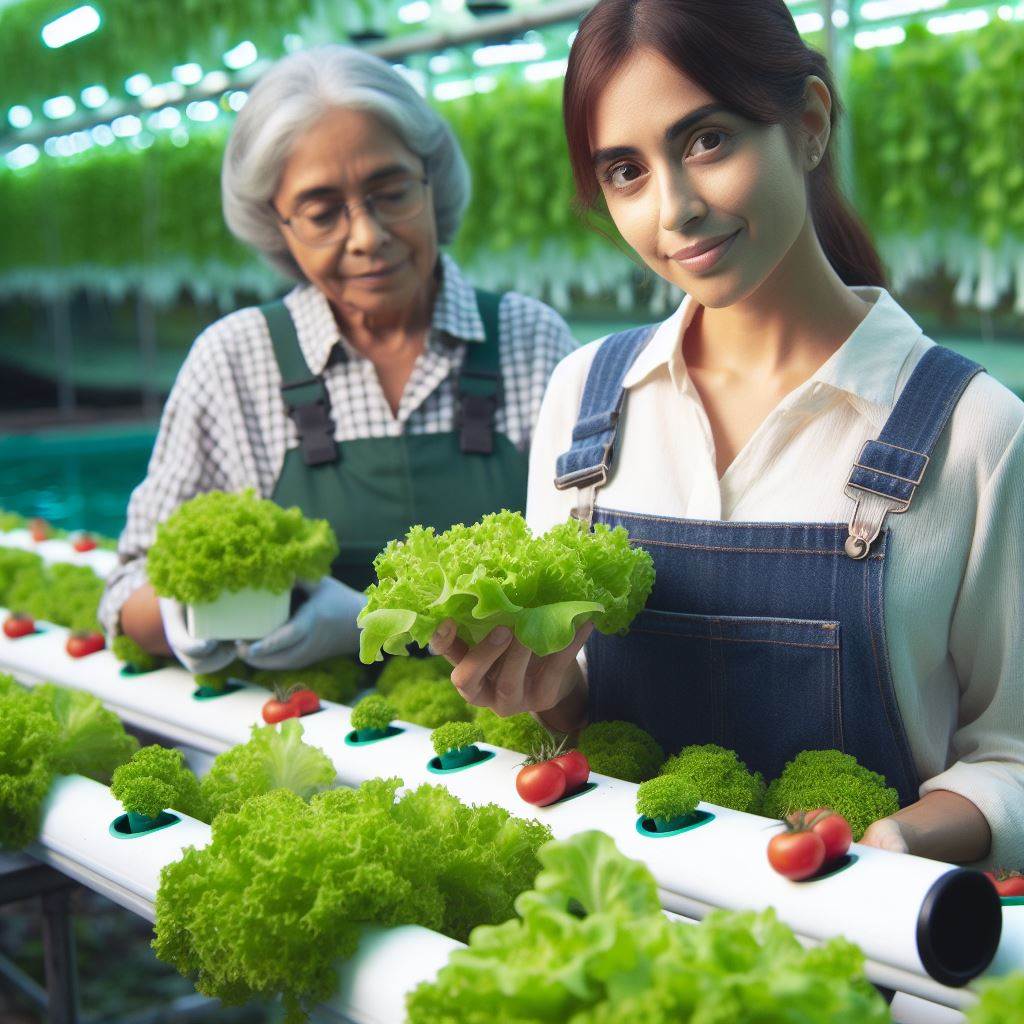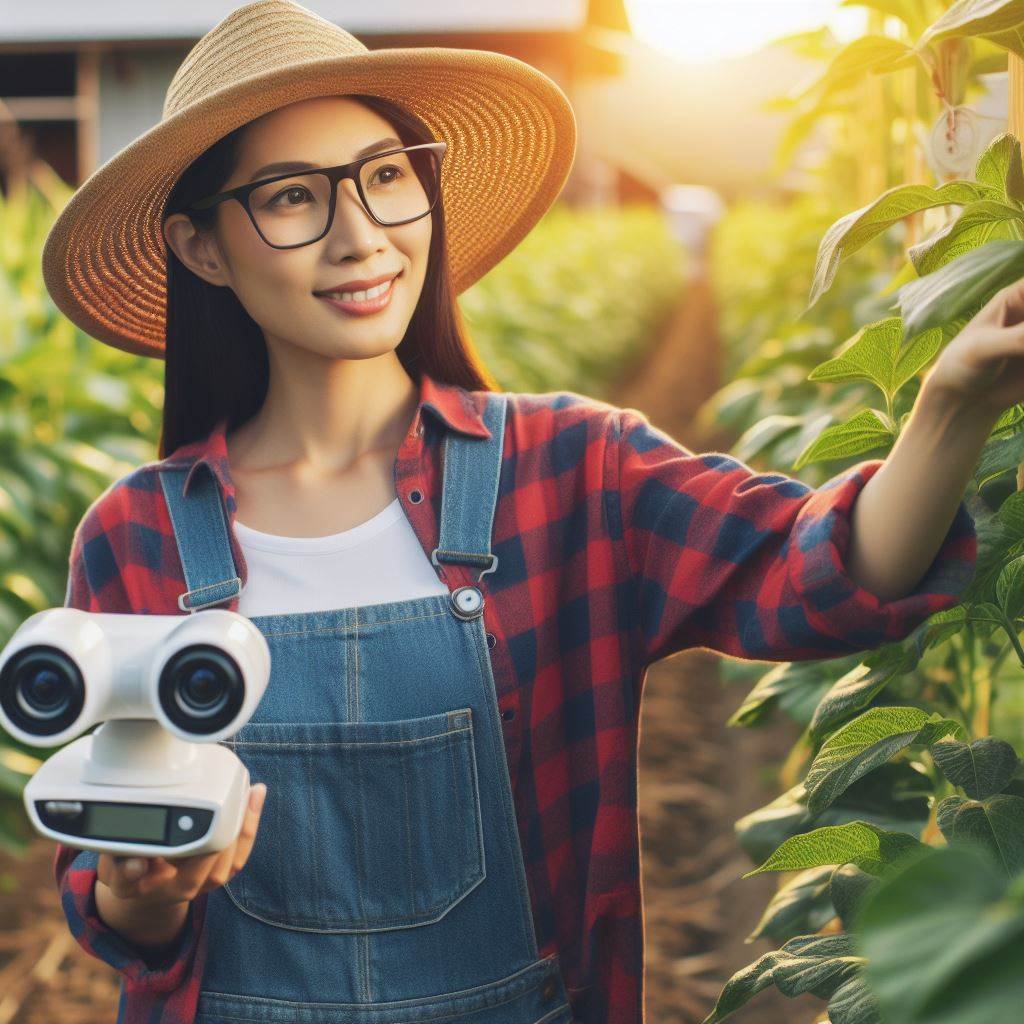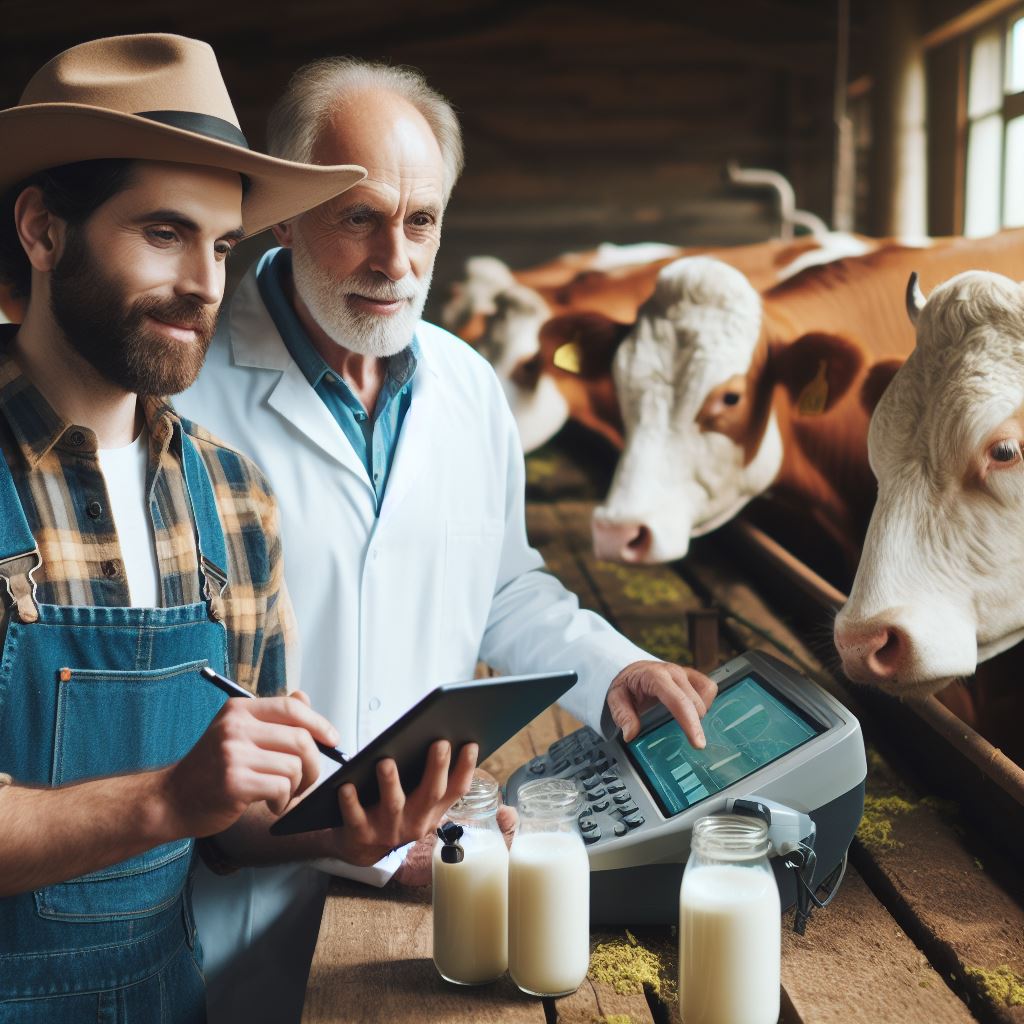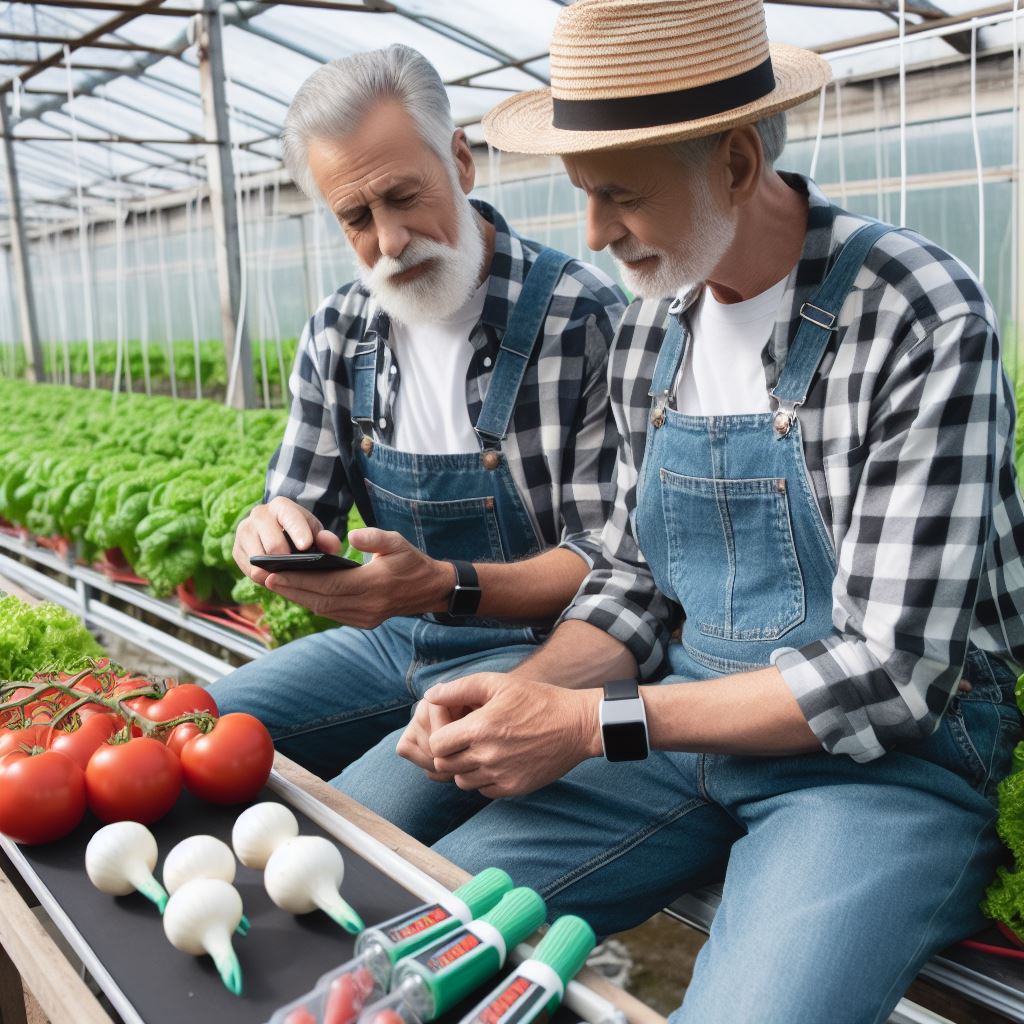Introduction
Regenerative agriculture is an approach that focuses on restoring and enhancing the health of the soil.
It aims to increase soil fertility, biodiversity, and resilience to climate change.
Incorporating technology into regenerative agriculture is crucial for several reasons.
Technology enables precision agriculture, allowing farmers to apply inputs only where needed, reducing waste and environmental impacts.
By using sensors, farmers can monitor soil moisture, nutrient levels, and crop health in real-time, making informed decisions.
Satellite imaging and drones help identify areas of the field that need attention, such as pest outbreaks or nutrient deficiencies.
Robotic systems can automate tasks like planting, harvesting, and weeding, saving farmers time and reducing labor costs.
Data analytics and machine learning algorithms can analyze large amounts of data to optimize crop rotations and improve soil health.
By using renewable energy sources, such as solar panels, farmers can reduce their dependence on fossil fuels and lower greenhouse gas emissions.
Internet of Things (IoT) devices can connect different aspects of a farm, allowing for better coordination and management.
Technology can also help farmers access market information, connect with buyers, and sell their produce directly, increasing their profitability.
Basically, incorporating technology into regenerative agriculture is essential for its success.
It enables farmers to make better decisions, reduce environmental impacts, and improve the overall sustainability of their operations.
Embracing technology is crucial for the future of agriculture.
Precision Agriculture
Definition and benefits of precision agriculture
Precision agriculture is a farming technique that utilizes advanced technology to maximize productivity.
Transform Your Agribusiness
Unlock your farm's potential with expert advice tailored to your needs. Get actionable steps that drive real results.
Get StartedIt allows farmers to collect and analyze data on soil conditions, water usage, and crop health.
By utilizing precision agriculture, farmers can make informed decisions and optimize their use of resources.
Benefits of precision agriculture include increased crop yields, reduced environmental impact, and cost savings.
Examples of technology used in precision agriculture
- Global Positioning System (GPS) technology is used to accurately map and track field boundaries and equipment.
- Sensors are used to gather data on temperature, moisture levels, and nutrient content in the soil.
- Drones equipped with imaging sensors can monitor crop health, detect pests, and identify disease outbreaks.
- High-resolution satellite imagery provides real-time data for precision agriculture practices.
How precision agriculture contributes to regenerative practices
- Precision agriculture reduces the need for excessive fertilizer and pesticide use, promoting environmentally friendly practices.
- By optimizing irrigation systems, water usage can be minimized, conserving this precious resource.
- It enables farmers to identify and rectify issues promptly, preventing further damage to crops.
- Through precision agriculture, farmers can adopt regenerative practices such as cover cropping and crop rotation.
Success stories and case studies
A farmer in Iowa used precision agriculture techniques to reduce nitrogen runoff by 30%, improving water quality in nearby rivers.
In Australia, a vineyard owner implemented precision irrigation based on soil moisture data, resulting in water savings of 20%.
A study conducted in the United States found that precision agriculture increased corn yields by 7-15% while reducing fertilizer use by 8-10%.
A dairy farmer in New Zealand minimized overgrazing and enhanced pasture management through precision grazing techniques.
Precision agriculture has revolutionized farming practices by leveraging technological advancements to enhance productivity, sustainability, and profitability.
Through the use of GPS, sensors, drones, and satellite imagery, farmers can make data-driven decisions to optimize resource allocation and minimize environmental impact.
Precision agriculture contributes to regenerative practices by reducing chemical inputs, conserving water, and supporting sustainable soil management.
Real-world success stories and case studies highlight the transformative impact of precision agriculture in various farming sectors, showcasing its potential for widespread adoption and scalability.
By embracing precision agriculture, farmers can cultivate healthier crops, protect natural resources, and build a more sustainable future for agriculture.
Read: Biochar: Revolutionizing Soil Management
Big Data and Analytics in Regenerative Agriculture
The advancement of technology has led to the emergence of innovative approaches in agriculture, with regenerative agriculture being at the forefront of sustainable practices.
One such approach is the utilization of big data and analytics, which has revolutionized the way farmers collect and analyze information to enhance their regenerative practices.
Definition and Significance of Big Data and Analytics in Agriculture
Big data refers to the vast amount of information generated in various sectors, including agriculture.
Analytics, on the other hand, involves the extraction of valuable insights from this data. In agriculture, big data and analytics play a crucial role in improving productivity, sustainability, and efficiency.
Data Collection and Analysis for Improved Regenerative Practices
Data collection is a fundamental step for farmers seeking to implement regenerative agricultural practices.
Through various technologies, such as sensors, drones, and satellite imagery, farmers can gather data on soil health, weather patterns, crop performance, and much more.
This data provides valuable insights for making informed decisions and optimizing regenerative practices.
Moreover, the analysis of collected data allows farmers to identify patterns, trends, and correlations that may not be visible to the naked eye.
By utilizing advanced analytics techniques, such as machine learning and predictive modeling, farmers can gain a deeper understanding of their farm’s dynamics and make data-driven decisions to improve regenerative practices.
Platforms and Tools for Data Management and Analysis
A multitude of platforms and tools have been developed to facilitate data management and analysis in agriculture.
These technologies assist farmers in efficiently collecting, storing, and processing their data.
Showcase Your Farming Business
Publish your professional farming services profile on our blog for a one-time fee of $200 and reach a dedicated audience of farmers and agribusiness owners.
Publish Your ProfileSome popular tools include farm management software, remote sensing platforms, and cloud-based data storage systems.
Farm management software, for instance, enables farmers to monitor and manage their operations by integrating data from multiple sources, such as weather stations and irrigation systems.
Remote sensing platforms utilize satellite imagery and drones to capture extensive data on crop health and growth patterns.
Cloud-based data storage systems provide secure and accessible repositories for storing and sharing farm-related information.
Read: Agri IoT: Smart Solutions for Farmers
Case Studies Highlighting the Use of Big Data and Analytics in Regenerative Agriculture
Several case studies exemplify the successful implementation of big data and analytics in regenerative agriculture.
Vineyard in California
One such case study involves a vineyard in California that leveraged data collected from soil moisture sensors and weather stations.
By closely monitoring these parameters, the vineyard optimized irrigation practices and reduced water usage by 20%.
This data-driven approach not only improved sustainability but also enhanced yield and grape quality.
Organic farm in Iowa
Another case study focuses on a large-scale organic farm in Iowa.
By utilizing machine learning algorithms to analyze historical weather data and crop performance, the farm successfully predicted pest outbreaks and implemented preventive measures.
As a result, pesticide usage decreased by 50%, minimizing environmental impact while maintaining crop productivity.
Big data and analytics have transformed regenerative agriculture by offering farmers valuable insights and tools for data-driven decision-making.
Through effective data collection, analysis, and the utilization of innovative platforms, farmers can optimize their regenerative practices, leading to enhanced sustainability, productivity, and environmental stewardship.
Read: Vertical Farming: The Future of Urban Agri
Internet of Things (IoT) and Sensors
In today’s era of technological advancements, the Internet of Things (IoT) has emerged as a groundbreaking concept.
IoT refers to a network of interconnected devices or objects that collect and exchange data.
This technology has found its way into various industries, including the agricultural sector.
When it comes to regenerative agriculture, IoT plays a crucial role in revolutionizing farming practices.
By integrating IoT devices and sensors into farming operations, farmers gain access to real-time data, enabling them to make informed decisions and optimize their yield.
Benefits and applications of IoT in regenerative agriculture
The benefits and applications of IoT in regenerative agriculture are numerous.
Firstly, IoT devices can monitor and analyze crucial environmental factors such as temperature, humidity, and sunlight.
This information allows farmers to create the ideal growth conditions for their crops.
Additionally, IoT enables remote monitoring of soil health by utilizing soil moisture sensors.
These sensors collect data on soil moisture levels, helping farmers determine the optimal irrigation schedule and prevent water wastage.
We can also find weather stations among the examples of sensor technologies used in agriculture.
These stations collect data on weather conditions, enabling farmers to plan their activities accordingly.
They can make informed decisions related to planting, harvesting, and protecting their crops from adverse weather events.
How IoT and sensors enhance sustainable farming practices
Minimize the use of synthetic pesticides and fertilizers
IoT and sensors have the potential to enhance sustainable farming practices in various ways.
Firstly, by providing real-time data on various environmental factors, farmers can minimize the use of synthetic pesticides and fertilizers.
They can rely on precise data to implement precision farming practices, reducing the overall environmental impact.
Optimization of their irrigation practices
The data collected by IoT devices and sensors can also help farmers optimize their irrigation practices.
By monitoring soil moisture levels, farmers can avoid over- or under-irrigation, resulting in water conservation and increased crop yield.
Early detection of potential issues or diseases in their crops
Furthermore, IoT enables predictive analytics, helping farmers identify potential issues or diseases in their crops at an early stage.
By detecting diseases or nutrient deficiencies promptly, farmers can take necessary measures to prevent any further damage, ensuring higher crop productivity.
Automation of various farming processes
Through the Internet of Things, farmers can also automate various farming processes, reducing labor costs and increasing efficiency.
For instance, IoT devices can control and monitor irrigation systems, adjust lighting conditions in greenhouses, and even identify and remove weeds autonomously.
Essentially, the Internet of Things (IoT) and sensors have revolutionized the agricultural sector, including regenerative farming practices.
By providing real-time data on environmental factors, monitoring soil health, and enabling automation, IoT enhances sustainability and productivity in agriculture.
With the advancements in IoT technology, the future of farming looks promising, offering greater efficiency and resource optimization.
Showcase Your Farming Business
Publish your professional farming services profile on our blog for a one-time fee of $200 and reach a dedicated audience of farmers and agribusiness owners.
Publish Your ProfileRead: Organic Farming: Tech Advancements Guide
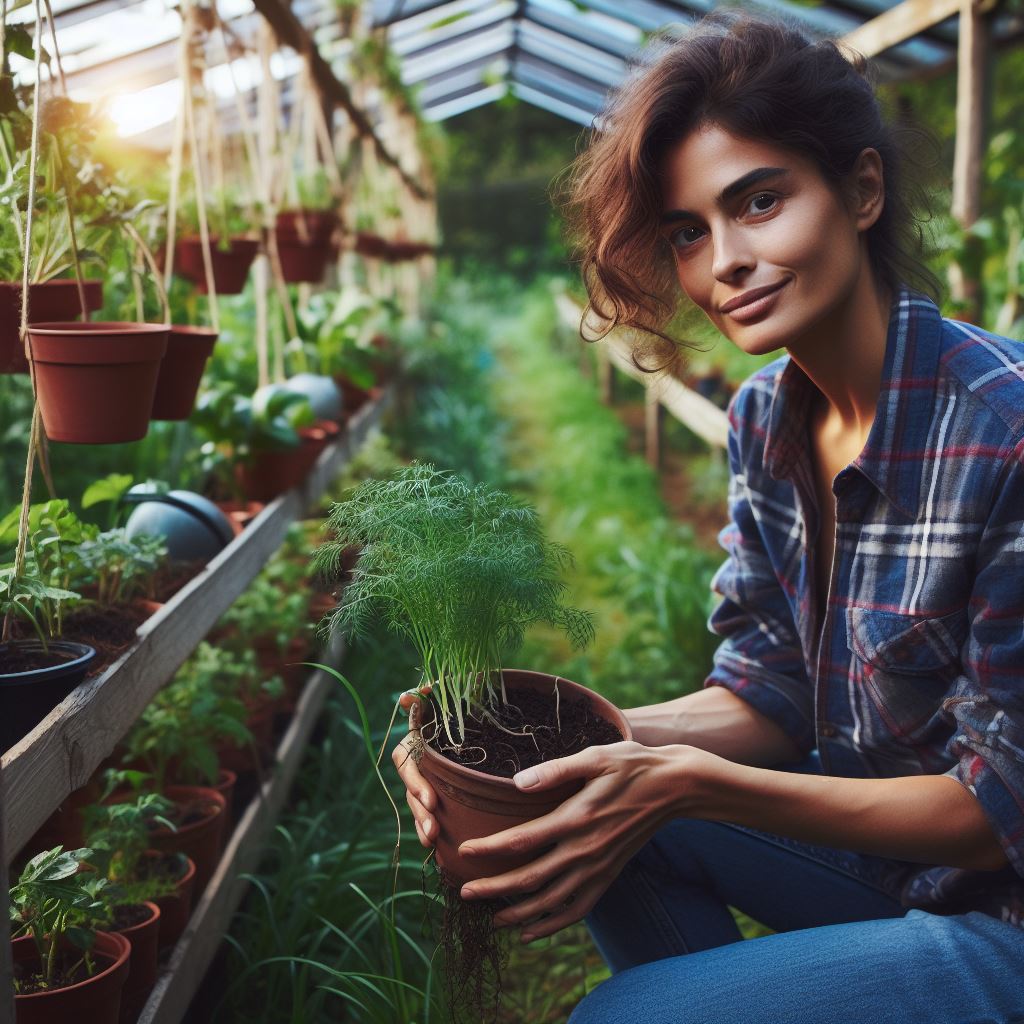
Vertical Farming and Controlled Environment Agriculture (CEA)
Vertical farming and Controlled Environment Agriculture (CEA) are innovative approaches that are revolutionizing the agricultural industry.
In this section, we will examine the overview of vertical farming and CEA, the technological advancements in vertical farming systems, how vertical farming supports regenerative agriculture goals, and the benefits of vertical farming and CEA for sustainability.
Overview of Vertical Farming and CEA
Vertical farming involves cultivating crops in vertically stacked layers or on vertically inclined surfaces, using controlled environments such as greenhouses or warehouses.
This method maximizes space utilization and reduces the need for traditional open-field agriculture.
Controlled Environment Agriculture (CEA) refers to the practice of growing crops in enclosed environments where all factors, including temperature, light, humidity, and nutrients, are precisely controlled.
This allows farmers to optimize growing conditions and achieve higher yields.
Technological Advancements in Vertical Farming Systems
The advancement of technology has greatly enhanced vertical farming systems.
Vertical farms now utilize advanced LED lighting, hydroponic or aeroponic systems, and automation technologies to optimize plant growth.
These advancements have improved efficiency, reduced water and pesticide usage, and minimized environmental impact.
How Vertical Farming Supports Regenerative Agriculture Goals
Vertical farming plays a crucial role in promoting regenerative agriculture practices.
By cultivating crops in controlled environments, vertical farms eliminate the need for harmful pesticides and herbicides.
They also use significantly less water and reduce soil erosion, conserving natural resources.
Furthermore, vertical farming allows year-round cultivation, reducing reliance on rain-fed agriculture and enabling consistent food production.
This contributes to food security, especially in regions with limited arable land or harsh climates.
Benefits of Vertical Farming and CEA for Sustainability
Vertical farming and CEA offer numerous benefits for sustainability.
Firstly, they minimize the need for land conversion, preserving natural habitats and biodiversity.
They also reduce carbon emissions associated with long transportation distances, as vertical farms can be established closer to urban areas.
Additionally, vertical farming systems are highly efficient in their water usage.
By utilizing hydroponics or aeroponics, they require 70-95% less water compared to conventional agriculture.
This not only conserves water but also reduces strain on freshwater resources.
Furthermore, vertical farms can be integrated into existing buildings, making use of vacant urban spaces.
This repurposing of infrastructure contributes to sustainable urban development and the revitalization of abandoned areas.
In general, vertical farming and Controlled Environment Agriculture (CEA) are revolutionizing the agricultural industry.
With technological advancements, they support regenerative agriculture goals by eliminating harmful chemicals, reducing water and soil erosion, and enabling year-round cultivation.
Moreover, they offer sustainability benefits such as land preservation, reduced carbon emissions, efficient water usage, and repurposing of urban spaces.
Embracing vertical farming and CEA is crucial for a more sustainable and resilient future in agriculture.
Robotics and Automation
Introduction to robotics and automation in agriculture
Robotics and automation technologies are revolutionizing the agriculture industry. They involve the use of robots and automated systems to perform various farming tasks.
These technologies aim to increase efficiency, reduce labor costs, and improve overall productivity.
Examples of robotic systems used in farming tasks
- Automated seeding robots can precisely plant seeds at optimal depths and spacing.
- Robotic weeders can identify and eliminate unwanted plants without the need for harmful herbicides.
- Harvesting robots are designed to pick fruits and vegetables with minimal damage and high accuracy.
Role of robotics and automation in reducing environmental impact
- Robotic systems can target specific areas for pesticide application, reducing chemical usage.
- Automated monitoring devices can collect real-time data on soil moisture, nutrient levels, and pest populations.
- This data enables farmers to make informed decisions and optimize resource management.
Success stories and future prospects in robotic farming
Several farms have successfully adopted robotic systems, resulting in improved yields and profitability. In Japan, fully automated indoor vertical farms are revolutionizing vegetable production.
Robots equipped with AI and machine learning algorithms can learn and adapt to changing environmental conditions.
Future prospects include the development of autonomous drones for aerial crop monitoring and targeted interventions.
In essence, robotics and automation have the potential to significantly impact the agriculture industry.
These technologies can increase productivity, reduce labor demands, and promote sustainable farming practices.
By efficiently managing resources and minimizing environmental impact, robotic farming holds promise for a more sustainable future.
Conclusion
Recap of the different tech approaches in regenerative agriculture
Regenerative agriculture has seen significant advancements in technology approaches.
These include precision farming, remote sensing, IoT, and data analytics, among others.
These approaches have proven to be crucial in improving farming practices and productivity.
Importance of continued innovation and adoption of technology in farming practices
Continued innovation and adoption of technology are of utmost importance in the future of regenerative agriculture.
With the ever-increasing global population, the need for sustainable and efficient farming practices is paramount.
Showcase Your Farming Business
Publish your professional farming services profile on our blog for a one-time fee of $200 and reach a dedicated audience of farmers and agribusiness owners.
Publish Your ProfileTechnology can help address these challenges by optimizing resource utilization and reducing environmental impacts.
As we look towards the future of regenerative agriculture with technology, it is clear that these innovations will play a vital role.
They offer immense potential in mitigating climate change, enhancing soil health, and promoting biodiversity.
The integration of technology and regenerative practices can lead to a more sustainable and resilient agricultural system.
However, it is essential to acknowledge that technology alone is not a panacea.
It should be complemented by traditional knowledge and best practices.
Moreover, accessibility and affordability of technology should be ensured to make it inclusive for all farmers, regardless of their scale of operations.
Final thoughts on the future of regenerative agriculture with technology
In a nutshell, regenerative agriculture has the potential to revolutionize the way we produce food.
By harnessing the power of technology and combining it with sustainable farming practices, we can ensure a healthier planet and a more food-secure future.

